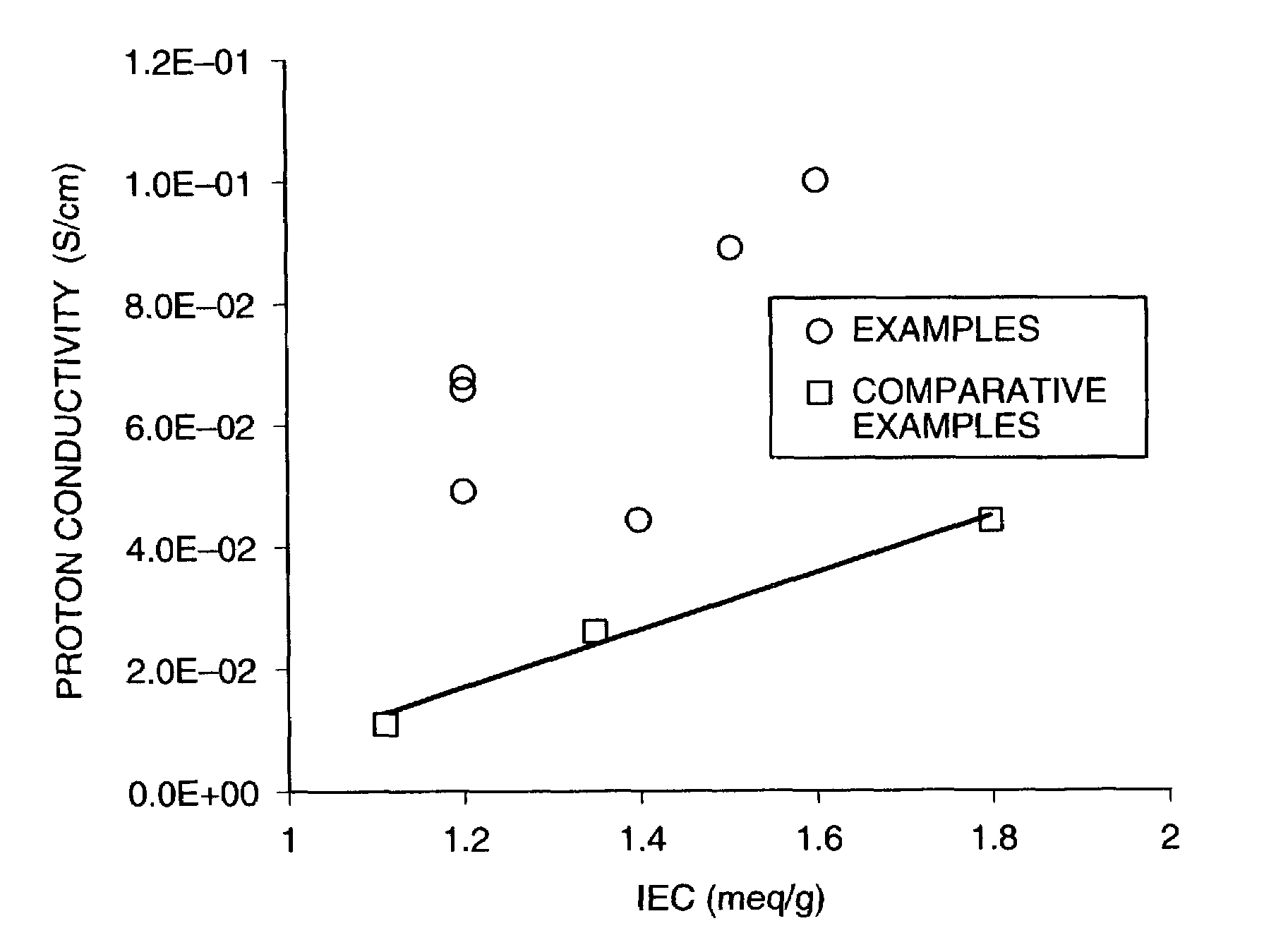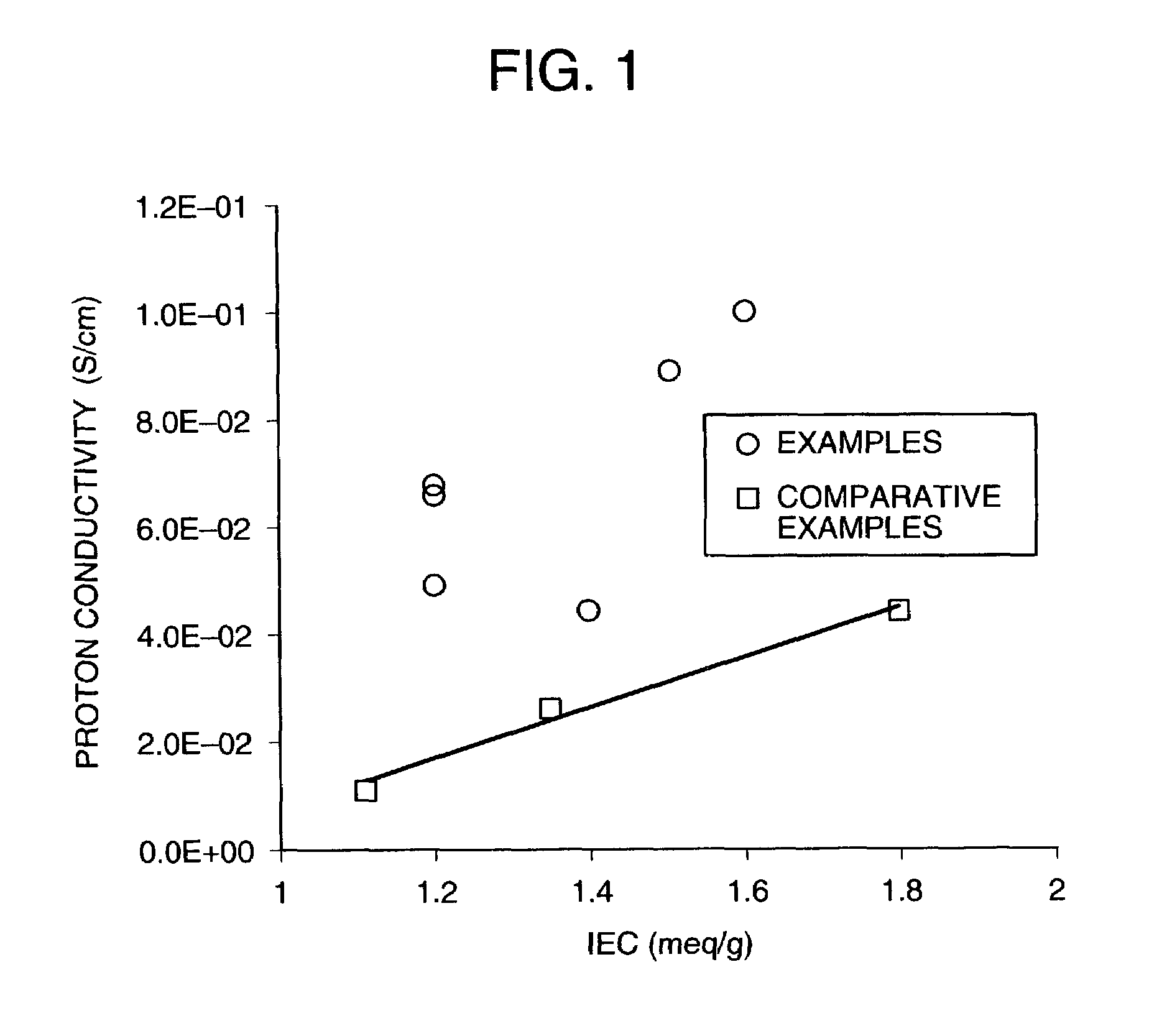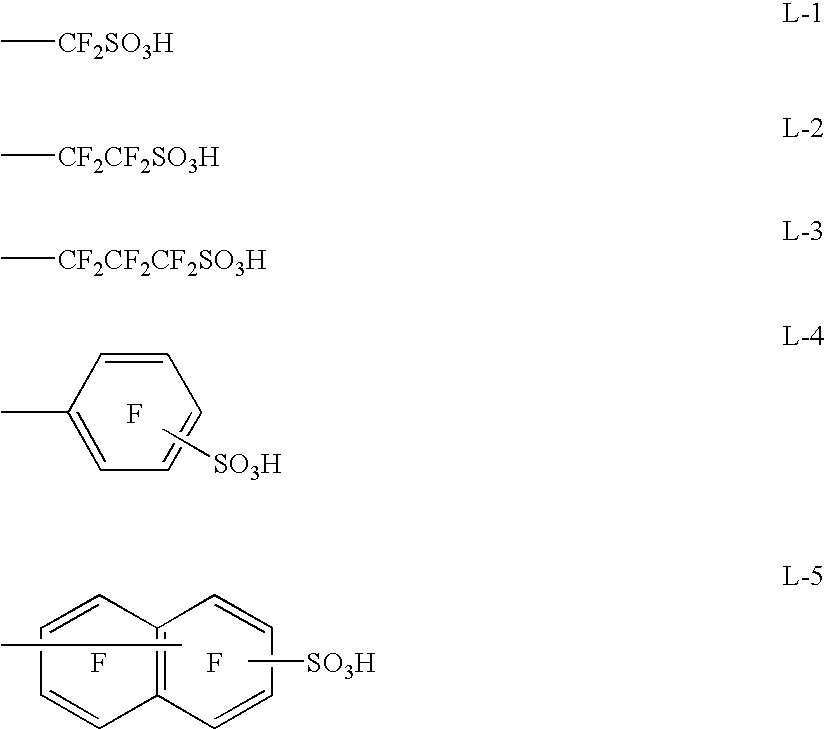Aromatic polymer, method for producing the same and uses thereof
- Summary
- Abstract
- Description
- Claims
- Application Information
AI Technical Summary
Benefits of technology
Problems solved by technology
Method used
Image
Examples
reference example 1
(A) Copolymerization of 2-methoxy-1,4-dihydroxybenzene and 4,4′-difluorodiphenylsulfone:
[0136]In a flask, the inner atmosphere of which was replaced with nitrogen, were charged 100 ml of N-methylpyrrolidone and 10.12 g (73.1 mmols) of 2-methoxy-1,4-dihydroxybenzene, and 10.32 g (74.7 mmols) of potassium carbonate was added thereto, followed by carrying out the reaction at 80° C. for 1 hour. Thereafter, 30 ml of toluene was added and the temperature was gradually raised to 150° C. to distill off toluene. The temperature was lowered to room temperature, and then 18.43 g (72.5 mmols) of 4,4′-difluorodiphenylsulfone was added, followed by heating to 140° C. and carrying out the reaction for 24 hours. After completion of the reaction, the reaction mixture was added to 1000 ml of methanol to precipitate a polymer, followed by filtration to obtain a polymer. Furthermore, purification was carried out by Soxhlet extraction (methanol solvent) to obtain a copolymer (a) of 2-methoxy-1,4-dihydro...
reference example 2
(B) Demethylation of the Polymer (a):
[0137]21.55 Grams of the polymer (a) produced in Reference Example 1 and 1000 ml of methylene chloride were charged in a flask and the resulting solution was cooled to −78° C., followed by adding dropwise 200 ml of 1M methylene chloride solution of boron tribromide (200 mmols) over a period of 3 hours and 40 minutes. Then, the temperature was gradually raised to room temperature, followed by stirring for 18 hours. After completion of the reaction, the solution was added to 1000 ml of ice water to precipitate a polymer, followed by filtration to obtain a polymer. Furthermore, the polymer was purified by washing with water and reprecipitation, and dried under reduced pressure to obtain 20.36 g of demethylated product (polymer (b)) of the polymer (a). As a result of 1H-NMR analysis, it was confirmed that the demethylation reaction quantitatively proceeded. As a result of measurement of the molecular weight by GPC using DMAc as a developing solvent, ...
reference example 3
(C) Preparation of Potassium Pentafluorobenzenesulfonate:
[0138]25 Grams (93.8 mmols) of pentafluorobenzenesulfonyl fluoride was charged in a flask, and 13.0 g (93.8 mmols) of potassium carbonate and 100 ml of water were added under cooling with ice, followed by stirring at room temperature for 9 hours. Then, 1.3 g (9.4 mmols) of potassium carbonate was further added and the mixture was stirred at 60° C. for 1 hour. A white solid produced was filtered off and purified by recrystallization with water. The resulting white solid was subjected to 19F-NMR measurement and it was confirmed that the resulting white solid was potassium pentafluorobenzenesulfonate (c).
PUM
| Property | Measurement | Unit |
|---|---|---|
| Time | aaaaa | aaaaa |
| Time | aaaaa | aaaaa |
| Electric potential / voltage | aaaaa | aaaaa |
Abstract
Description
Claims
Application Information
 Login to View More
Login to View More - R&D
- Intellectual Property
- Life Sciences
- Materials
- Tech Scout
- Unparalleled Data Quality
- Higher Quality Content
- 60% Fewer Hallucinations
Browse by: Latest US Patents, China's latest patents, Technical Efficacy Thesaurus, Application Domain, Technology Topic, Popular Technical Reports.
© 2025 PatSnap. All rights reserved.Legal|Privacy policy|Modern Slavery Act Transparency Statement|Sitemap|About US| Contact US: help@patsnap.com



